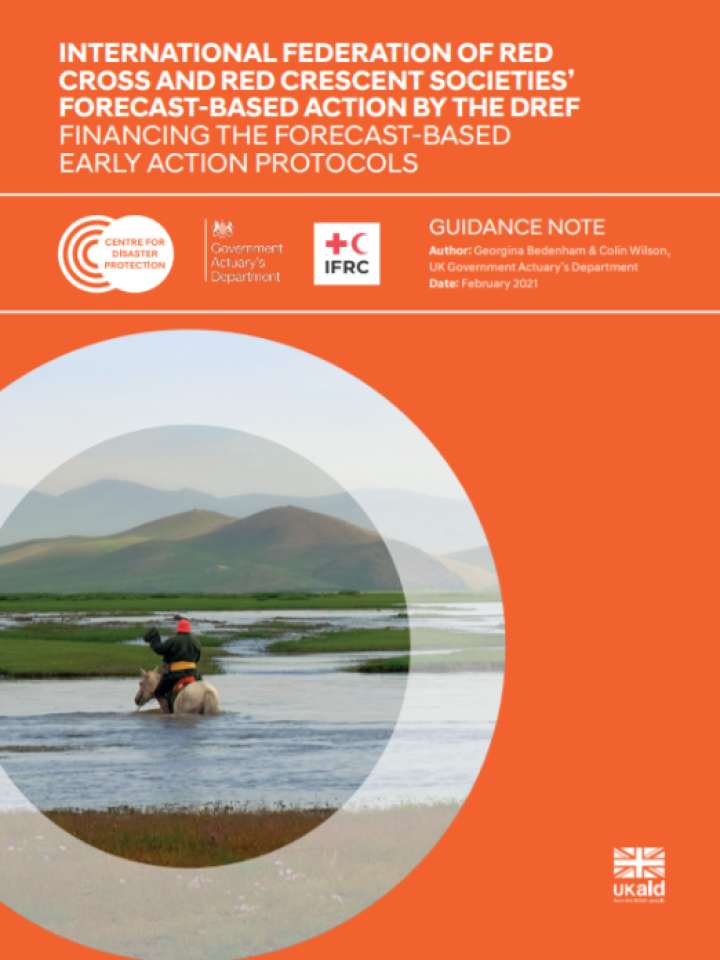Financing the forecast-based early action protocols
This report examines the alternative options that may be available to the International Federation of Red Cross and Red Crescent Societies (IFRC) when funding its Early Action Protocols (EAPs) through the Forecast-based Action by the DREF (FbA by the DREF). Each EAP is a formal plan that guides timely and effective implementation of early action when a severe weather or climate forecast shows a high likelihood of critically impacting people in a target area. The EAP contains information on triggers (when to activate), early action (what to do) and funding allocation (with what resources). It describes the step-by-step process for the implementation of early action once a trigger is hit. EAPs address extreme events that occur, on average, every five years, and cover three types of costs: annual readiness costs, one-off pre-positioning costs, and early action costs (once a trigger is reached). Funding for this last set of costs is only released once the pre-agreed trigger is met.
The report finds that, as not all disasters that could occur will occur, there is potential to use the funds that have been set aside to meet a greater number of needs. The IFRC should consider what its risk tolerance level is, with respect to the level of EAP early action costs that can be met with certainty, in line with its principles and objectives. A number of different options are available to finance the risk of funds being insufficient to cover all early action costs. Each has different implications, such as who would own the risk, the certainty with which needs would be met, and practical considerations around operational feasibility. Finally, the IFRC should consider how the underlying risks and geographical spread of EAPs may change over time. Any selected options should take in to account the future potential growth of the fund.
Explore further
